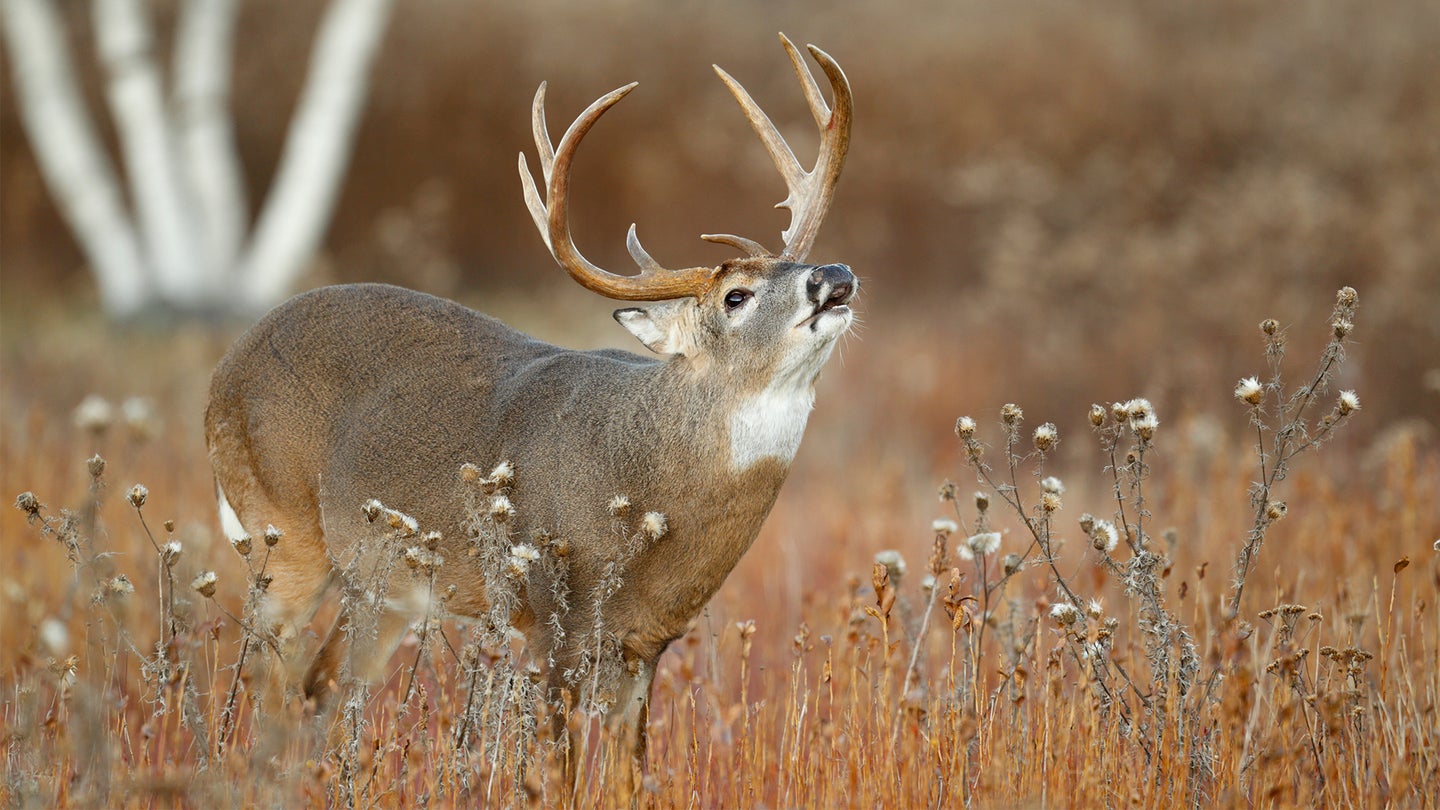How to Hunt the Best Day of the Rut No. 3: November 1
We’ve picked back-to-back best days, because if you don't get your buck today, then you need to keep at it tomorrow. Follow these two tactics to get it done

We’ve been picking the seven Best Days of the Rut for nearly 20 years now, and this is the first time we’ve chosen back-to-back dates. I guess this is a year of firsts (we also picked the earliest best day a couple weeks back), but there’s also this: We are at a stage of the rut where you literally don’t want to miss a day in the timber if you can help it. There are periods during the rut when the action can stall for a while, but this isn’t one of those times. Right now, if it doesn’t happen one day, it may well happen the next.
Here’s a perfect example: A couple of years ago I urged my brother-in-law to hunt Halloween day. He went at it hard, sitting both morning and evening (in stands I directed him to no less) but saw only tepid activity. I tried to coax him back into the timber the next day, but he was having none of it and went duck hunting instead. So I sat the same spots on November 1 and saw constant action, including four great bucks.
There’s something about turning the calendar to November that can’t be denied. I often liken October to a simmering tea kettle, with the lid starting to rattle. When November hits, the first hot doe or an uncontrollable surge of testosterone or a drop in temps invariably knocks that lid off and things get really good. Well, that’s what I’m predicting will happen on Wednesday.
Related: The Best Days of the 2022 Whitetail Rut
Rut Phase: Late Seeking/Early Chasing

Up until now, bucks have been behaving mostly like gentlemen—nosing around does and making only half-hearted runs at any that might promise some romance, and then quickly giving up the chase when the right cues aren’t there. All that decorum goes out the window now, as bucks start badgering does in earnest. Now is when they will start making regular swings through doe bedding areas in the morning and doe feeding areas in that afternoons, looking for potential mates. If a cold front or rain/snow event drops now, count on bucks to run any doe they encounter.
November 1 Morning Hunt Plan: Watch a Doe Bedding Area
I generally avoid hunting bedding areas, as I want bucks and does to remain feeling safe where they already feel that way. I’ll still keep buck sanctuaries safe (for now), but it’s time to push the envelope a bit on doe bedding areas. Bucks are going to be searching for does well into the morning, and their favorite place to do so is where the girls sleep for the day. They know these spots well and will be swinging past them well after daybreak. I like to be on the downwind side of the bedding area, as I’ve found many mature bucks will favor that side, trusting the wind to tell them whether there’s an estrous doe holed up there. And you might be surprised how late in the morning buck will swing through. This is the time of year when that 10 a.m. to noon time frame can be really good. So, stick it out, and you may well be rewarded.
November 1 Evening Hunt Plan: Lure In a Bucks with a Doe Decoy

As I’ve mentioned, bucks are running down any doe they can see right now, relying on scent, sound, and sight to help them acquire targets. That makes them highly vulnerable to a good doe decoy, especially one placed in or near a hot feeding area. Bucks know these favored salad bars, both from their own grocery runs and all the intel they’ve gathered sniffing around the last few weeks. Normally I shy away from doe decoys, as they often to attract curious does that eventually sniff out the fake and cause a ruckus, but an antlerless deke works perfectly now for pulling in a lovesick buck. Make sure you place the deke in a highly visible area. If deer can’t spot your fake from afar, chances are high they’ll miss it completely.
Hot Tip: Make Your Decoy Come Alive
I’ve been decoying deer for years, and one thing I’ve learned is how much even a slight hint of motion can make all the difference. You can add the impression of motion to your decoy by taping short sections of white toilet paper (or other lightweight fabric) to the ears and tail. Even a slight breeze will cause the material to waver and shift, which will help attract the attention of any cruising buck. Sure, it looks goofy and unrealistic to us, but any buck in the mood is not paying attention to fine detail from a distance. That impression of motion simply indicates that the ruse is real. And that’s often all you need to seal the deal.
Gear Tip: Hit the Can

I’ve grunted and rattled in a ton of bucks over the years, so I’m all about calling, especially during the rut. And while the guy sounds produced by a grunt tube or horns can surely pull in a buck now, what he’s really interested in is finding a girlfriend. This makes doe bleats and bawls deadly effective now, especially if you encounter a nice buck who just doesn’t feel like fighting. There are plenty of bleat calls on the market but none simpler—or better sounding—than a simple can call. They produce near-perfect bleats; they’re ridiculously easy to use, they store nicely in a pack or pocket, are widely available, and are pretty darn cheap. So, get yourself a simple bleat can before you hit the woods on Wednesday.
